Echoes with the stories, recorded in the Holy Bible, of Abraham, Job, Moses, Ruth, Elijah, John the Baptist, Jesus Christ, Paul,
And many other leading Biblical figures, whose teachings and deeds Have ultimately affected and influenced the lives of millions of People around the world
Through the words of the prophets Abraham, Job, and Moses, the Bible’s Old Testament records that it is in this land of Jordan that God first manifested Himself to Man. Biblical interpretations have even located the story of Adam and Eve and the Garden of Eden to an area along the north-west bank of the River Jordan known as Beysan (Beth-shean). It is also suggested that, when Cain killed his brother Abel and was banished by God to the area “east of Eden”, he went to one of the three sites east of the River Jordan that would later become known as the ‘Cities of Refuge’. A person accused of involuntary manslaughter could seek refuge in one of these cities until a fair trial could be arranged.
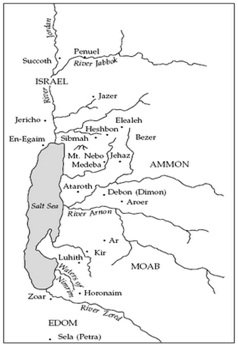
The land subsequently witnessed the missions of the prophets from the historic journey of Moses and the Israelites to the meteoric rise of the Christian faith heralded in the New Testament by John the Baptist and the life and teachings of Jesus Christ. This spiritual area, known as the ‘Plains of Moab’ in the Bible’s Old Testament and ‘Peraea’ in the New Testament, covers the lands to the east of Jordan’s famous river of baptism and along the Dead Sea in the western part of Jordan. It is the only area within the Holy Land that links the lives of Moses, Joshua, Elijah, Elisha, John the Baptist, and Jesus Christ, Reminders of the past are everywhere in Jordan – this is where Jacob wrestled with the Angel of God, where Lot’s wife was turned into a pillar of salt, where Job suffered and was rewarded for his faith, and where Elijah ascended to heaven. It is the place where Moses led the Israelites on their flight from Egypt to the Holy Land and where he delivered God’s Law to Mankind. It is where Jesus was baptized by John and anointed by God, where he called his first disciples and where the Holy Trinity - the Father, Son and Holy Spirit - manifested itself.
It is the land of miracles, where, as the Bible records, God appeared to the prophets in the form of whirlwinds, a cloud of light, an angel, or a voice that commanded them to do his will. Here too, is where Jesus cured a demented man by sending his troubled spirits into a herd of swine that plunged into the sea and drowned.
Jesus travelled, taught, and healed the sick throughout Transjordan, in the regions of the Decapolis and Peraea, and from here he started his last purposeful journey to Jerusalem, Some of the world’s earliest churches have been found in Jordan, including the 2nd or 3rd century ‘prayer hall’ at Bethany-Beyond-the-Jordan, the 4th century church at Umm Qays, and the remains of what is believed to be the oldest purpose-built church in the world at Aqaba. At Madaba, in the 6th century Byzantine church of St. George, fragments of the past are revealed in an outstanding mosaic floor map of Jerusalem and the Holy Land.
God has granted to the land of Jordan many special places. The north of the country can boast of the homeland of the Prophet Elijah, and in the northern and central regions they take pride in the fact that Christ performed many miracles there and preached in their towns. The south is also very proud that John the Baptist was martyred in “Mekawer” Castle, which is south of Madaba. In the Jordan River John baptized Jesus and there he met five of his disciples, including Peter. From here he set out preaching about the Kingdom of God, beginning the public part of his life.
Moses
Upon Mount Nebo, God revealed Himself to Moses, as He had previously revealed Himself at Sinai, and Moses stood and looked over the Promised Land stretched out in front of him. He saw the Jordan River before him, descending from the heights of Mount Hermon into the depths of the Jordan valley.
Joshua
After Moses passed away, Joshua, the son of Nun, crossed with the Israelites into the Promised Land.
Elijah and Elisha
But soon after their entrance into the Holy Land the people turned from the worship of God and took to worshipping strange gods. God sent to them many prophets to bring them back to true belief in His oneness and observance of His commandments. One of the most famous prophets was Elijah, who lived during the time of the rule of King Ahab in Israel. Ahab and his wife oppressed Elijah, and when Elijah grew old, God inspired him to leave and settle in what is today Jordan. So he left with his appointed successor, Elisha, who carried on his spirit and message. When they arrived at the River Jordan, Elijah struck it with his cloak and parted the waters of the river. He and Elisha crossed the dry land, and as they were speaking together upon the other side of the river, a fiery chariot came and carried Elijah into the heavens. (2nd Kings: 2)
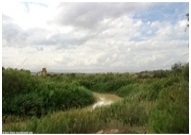
John the Baptist
Again, hundreds of years passed and John the Baptist appeared at Bethany (Bayt ‘Anya) on the far side of the Jordan River (John 1:28 & John 10:40). He continued the path of faith and took the massage from Moses – representative of the Holy Law – and from Elijah – representative of the prophets of the Old Testament (Luke 1:17). John was the last prophet in the manner of the Old Testament prophets and the first prophet of the New Testament. He called the people to repent in preparation for the arrival of Christ, the Redeemer, and began to baptize in the Jordan River and the surrounding springs. The baptism he administered was a
symbol of repentance and belief in God. Fleeing the authorities because of his sermons, he made for Bethany beyond the Jordan. He would sleep and rest in a cave close to the springs of “Saphsaphas” (what is today known as the Valley of Kharrar). The Bible states that here people from Jerusalem, Judea and the surrounding regions of the Jordan flocked to John for baptism. Jesus visited John here. Then the Jews in Jerusalem sent some of the Scribes and Pharisees to question John, and John said to them, “I am not the Messiah, I am only a voice crying out in the wilderness saying, ‘Follow the path of God and make firm His path.’”
(John 1:24)
BETHANY BEYOND THE JORDAN
45minutes drive from Amman , 10 KM.North of the Dead Sea.
The site of John the Baptist’s settlement at Bethany Beyond the Jordan, where Jesus was baptised, has long been known from the Bible and from Byzantine and medieval texts. The actual site has now been identified as the site that extends between
Tell al-Kharrar (Elijah’s Hill / Tall Mar Elias in Arabic) and
John the Baptist Church area, on the east bank of the Jordan River in the Hashemite Kingdom of Jordan. Tell al-Kharrar is the same place from which Elijah is believed to have ascended to heaven in a whirlwind on a chariot of fire. Wadi al-Kharrar is believed to be Kerith Ravine, the natural stream “east of the Jordan” where God commanded Elijah to seek refuge from King Ahab and Queen Jezebel. At the time it was appropriate for John the Baptist to begin his mission from the same place that Elijah had ended his life, as both of these leading Biblical prophets played similar theological roles: they both confronted the religious laxity of their times, challenged political authority, announced the imminent arrival of the Messiah, and urged the populace to repent and lead righteous lives. For almost two millennia, this area which extends along the east bank of the Jordan River, opposite Jericho, has been known to be the place where Jesus Christ was baptized by John. But, in 1996, stunning archaeological discoveries identified the exact site where John had been living and carrying out his baptisms, as Bethany Beyond the Jordan. The Bible (John 10:40) refers to this place when, after being threatened with stoning in Jerusalem “Jesus went back across the Jordan to the place where John had been baptizing in the early days”. Though Jesus Christ’s divinely inspired role was announced before and during his birth, he actually launched his public ministry at Bethany Beyond the Jordan at the age of 30 , immediately after he was baptized by John and anointed by God. Several events took place during this three-day stayat Bethany: It was here that Jesus first prayed to God and it was here that he gathered his first disciples – Simon, Peter, Andrew, Philip, and Nathaneal. Pottery, coins, stone objects, and architectural remains confirm the site was used in the early 1st century AD, during the time of Jesus and John. The extensive architectural remains, which can be seen on “Elijah’s Hill” are from the 5th – 6th century Byzantine monastery and contain churches and chapels, baptism and water storage pools, and water systems. The 3rd century Roman building with fine mosaics is believed to be an early Christian ‘Prayer Hall’ – probably the earliest building, for this specific use, to have been identified anywhere in the world. Also identified is the cave where John the Baptist lived and carried out his works. Early pilgrims noted that water flowed from the cave, which John drank and used for baptisms. The cave was transformed into a church during the Byzantine period (early 4th to early 7th centuries AD). The water channel and the church, which is built around the cave, have been recently excavated.
Three Popes visited Jordan:
- Pope Paul VI in 1964
- Pope John Paul II in 2000
- Pope Benedict XVI in 2009
In those days John the Baptist came, preaching in the Desert of Judea and saying, "Repent, for the kingdom of heaven is near." ... People went out to him from Jerusalem and all Judea and the whole region of the Jordan. Confessing their sins, they were baptized by him in the Jordan River. (Luke 3:1, 5-6)
BIBLICAL
Wadi al-Kharrar is the modern name for the site of "Saphsaphas", which is depicted on the 6th century mosaic map of the Holy Land in Madaba. The site lies east of the Jordan River, just west of the village of Al-Kafrayn and within sight of the famous town of Jericho west of the river.
ARCHEOLOGICAL
At the beginning of Wadi al-Kharrar, near the monastic complex, or "Laura", Christian pilgrims have traditionally been shown a hill (known as Jabel Mar Elias in Arabic) where the Prophet Elijah ascended into heaven. Here, you can see a sanctuary that attracted pilgrims well into the medieval period.
HISTORICAL
The Russian pilgrim Abbot Daniel was impressed by the place and in 1106 he wrote: "Not far away from the river, at a distance of two arrow throws, is the place where the Prophet Elijah was taken into Heaven in a chariot of fire. There is also the grotto of Saint John the Baptist. A beautiful strong fast stream (torrential rain) full of water flows over the stones.The water is very cold, has a very good taste and is the water that John drank.
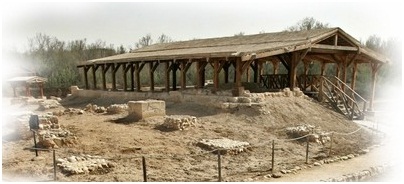
It was here that Jesus first prayed to God and that he gathered his first disciples.
Closer to the Jordan River are the remains of five memorial churches built by early believers. They were carefully described by pilgrims and travellers throughout history (5th- 20th centuries AD), linking them with Jesus’ Baptism on the eastern bank of the river. Some of these churches existed and were described well into the Islamic periods; a sign of Christian-Muslim coexistence in Jordan until today. From the time of Jesus until the 6th century AD, the area and its settlements were known by several names including, Bethabara, Bethania, Ainon, and Saphsaphas. Bethany formed part of the early Christian pilgrimage route between Jerusalem, the Jordan River, and Mount Nebo and is depicted and named on the 6th century mosaic map of the Holy Land, located in Madaba. Today the area’s Arabic name is al-Maghtas – The Place of Baptism.
John the Baptist, who started and ended his mission in Jordan, is the patron saint of Jordan for Roman Catholic Christians. Pope John Paul II visited Bethany Beyond the Jordan during his March 2000 pilgrimage to Jordan and the Holy Land and it was designated as Jubilee Year 2000 pilgrimage site by the Catholic Church in the Middle East, along Mount Nebo, Mukawir, Tall Mar Elias and Anjara.
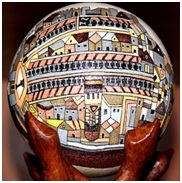
MADABA “The City of Mosaics”
Madaba and its hinterlands were repeatedly mentioned in the Old Testament as Medeba. It was featured in narratives related to Moses and the Exodus, David’s war against the Moabites, Isaiah’s oracle against Moab, and King Mesha of Moab’s rebellion against Israel. Some of the finest art of the early Christian centuries can still be seen in Madaba city and its surrounding regions in central Jordan. Between the 4th and 7th centuries AD, the prosperous ecclesiastical centre of Madaba produced one of the world’s finest collections of Byzantine mosaics, many fine examples of which are well preserved. Several church floor mosaics can be seen in their original locations, while others have been moved for protection and displayed in the Madaba Archaeological Park.
The Park houses Jordan’s oldest mosaic – a 1st century BC floor from the herodian Palace-fortress at Machaerus. But Madaba’s real masterpiece, in the Orthodox Church of Saint George, is the 6th century AD mosaic map of Jerusalem and the Holy Land – the earliest religious map of the Holy Land in any form to survive from antiquity. Madaba has a very long history stretching from the Neolithic period. The town of Madaba was once a Moabite border city, mentioned in the Bible in Numbers 21:30 and Joshua 13:9. Madaba dates from the Middle Bronze Age. During its rule by the Roman and Byzantine Empires from the 2nd to the 7th centuries, the city formed part of the Provincia Arabia set up by the Roman Emperor Trajan to replace the Nabataean kingdom of Petra. During the rule of the Islamic Umayyad Caliphate, it was part of the southern Jund Filastin. Madaba is located 30 kilometers south-west of the capital Amman.
MOUNT NEBO
Mount Nebo, just ten minutes west of Madaba by car, was the final station in Moses’ historic flight from Egypt to the Holy Land. Moses and his people camped “in the valley near Bethpeor”,a place long associated with the site known today as Ayun Musa (Springs of Moses), a small lush valley northeast of Mount Nebo. Another name for Mount Nebo is Pisgah (Syagha in Arabic):
“And Moses went up from the plains of Moab to Mt. Nebo, to the top of Pisgah which is the opposite of Jericho”. Deuteronomy 34:1
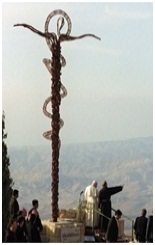
From Mount Nebo’s windswept promontory, overlooking the Dead Sea, the Jordan River Valley, Jericho, and the distant hills of Jerusalem, Moses viewed the Holy Land of Canaan that he would never enter. he died and was buried in Moab, “in the valley opposite Beth-peor” but his tomb remains unknown. After consulting the Oracle, Jeremiah reportedly hid the Ark of the Covenant, the Tent, and the Altar of Incense at Mount Nebo. Joshua was anointed by Moses as his successor and he went on to complete Moses’ mission by crossing the Jordan River with his people. The crossing point has been identified as the ford, directly opposite Jericho, known as Bethabara, or Beit ‘Abarah (house of the crossing). It is believed this may be the same ford known in the Bible as Beth-barah, Beth-arabah and Bethany-Beyond-the-Jordan. This has long been identified as the place where, centuries later, the prophets Elijah and Elisha divided the Jordan’s waters “to right and to left” and crossed to the eastern bank of the river. Mount Nebo became a place of pilgrimage for early Christians from Jerusalem and a small church was built there in the 4th century to commemorate the end of Moses¡¦ life. Some of the stones from that church remain in their original place in the wall around the apse area; the church was subsequently expanded in the 5th and 6th centuries into the present day large basilica with its stunning collection of Byzantine mosaics.
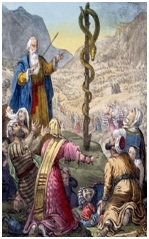
The Serpentine Cross, which stands just outside the sanctuary, is symbolic of the bronze (or brazen) serpent taken by Moses into the desert and the cross upon which Jesus was crucified. During the exodus, God instructed Moses to erect a bronze serpent on a pole to stop a plague he had sent to kill the rebellious Israelites. All who looked up at the serpent were spared death. The curative serpent wrapped around a pole would later become the symbol of the pharmaceutical industry. The raised serpent would also be recalled in the New Testament as a precursor to the lifting of Jesus on the cross - giving life to all who looked up to the raised figure.
“As Moses lifted up the serpent in the wilderness, even so must the Son of Man be lifted up, so that whoever believes will in Him have eternal life”
DID YOU KNOW?
- Six tombs, from different periods, have been found hollowed out of the rock beneath the mosaic-covered floor of the Moses Memorial church at Mount Nebo. In the present presbytery you can see remnants of mosaics, the earliest of which is a panel with A braided cross. The Serpentine Cross, which stands just outside the sanctuary, is symbolic of the brass serpent taken by Moses into The desert and the cross upon which Jesus was crucified.
- In the year 2000, the late Pope John Paul II commemorated the beginning of the new millennium with a spiritual pilgrimage to the Holy Land, starting his visit with prayers in the basilica at Mount Nebo. He then stood on the promontory and viewed the same Scene that Moses saw more than 3000 years ago.
- Mount Nebo was designated as Jubilee Year 2000 pilgirmage site by the Catholic Church in the Middle East, along Bethany Beyond the Jordan, Mukawir, Tall Mar Elias and Anjara.
MUKAWIR
The 1st Century AD Roman-Jewish historian, Josephus, identifies the awe-inspiring site of Machaerus (Mukawir) as the palace / fort of Herod Antipas, Who was the Roman-appointed ruler over the region during the life of Jesus Christ.It was here, at this hilltop fortified palace, overlooking the Dead Sea region and the distant hills of Palestine and Israel that Herod imprisoned and beheaded John the Baptist after Salome’s fateful dance. “He was beheaded after Salome’s fateful dance” Mathew 14:3-11. Like its sister site of Masada on the opposite side of the Dead Sea, Machaerus was also the scene of a Roman siege during the first Jewish revolt against Rome. The site is also one of the designated pilgrimage sites for the year 2000. Mukawir is an hour away from Madaba on the Kings’ Highway.
Madaba, Mount Nebo, Mukawir, Anjara, and Tall Mar Elias were all designated as
Jubilee Year 2000 pilgrimage sites
ANJARA
The ancient town of Anjara is located in the hills of Gilead east of the Jordan Valley. The town is mentioned in the Bible as a place where Jesus, his mother Mary and his disciples, passed through and rested in a nearby cave. The cave, which has long been a Holy place for pilgrims, has now been commemorated with a modern shrine / church of Our Lady of the Mountain. Anjara is 30 minutes away from Jerash
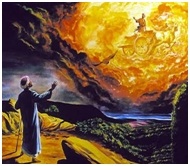
TALL MAR ELIAS
Associated with the Prophet Elijah, Tall Mar Elias is very close to the ruins of a village known as Listib. It is believed that this place was formerly Tishbi, the home of Elijah, a native of Giliad in Transjordan (2Kings 17:1). The fact that this is a religious site is substantiated by the two churches that were built on the Tall (hilltop) at the end of the Byzantine period. Elijah is known as the prophet Elias in Arabic. The Koran calls him “an honorable man” and a “messenger of God”. It also says, “We left mention of him among later men”, which refers to Elijah’s association with Moses, John the Baptist and Jesus. It is believed that Elijah’s ascension to Heaven in a chariot of fire took place at Wadi Al Kharrar, in Bethany beyond the Jordan.
Many scholars believe this to be the Holy place that was visited by Moses, Elijah, John the Baptist and Jesus Christ at different periods throughout history and referred to in the Bible as ‘Barreya’ in Arabic, ‘Perea’ in English, and ‘the desert’ in French. The site at Tall Mar Elias includes extensive architectural remains that are scattered across the summit of the hill that rises above Listib, from the southeast. Tell Mar Elias is approximately 80 kilometers northwest of Amman and approximately 15 kilometers northwest of Ajloun.
DID YOU KNOW?
Herod Antipas became governor of Machaerus after marrying a Nabataean princess, believed to be the daughter of King Aretus IV (9BC – 40AD), in order to cement a Herodian-Nabataean alliance. However, he also married his sister-in-law Herodia, a relationship that was strongly opposed by John the Baptist. As a result, Herod imprisoned and beheaded John at Machaerus (Mark 6: 14-29) the forces of King Aretus later defeated Herod Antipas’ army in 36AD. This was subsequently interpreted by many as divine retribution for the death of John the Baptist.
PELLA the site of ancient Penuel
Some of the most important events in the lives of Isaac’s twin sons, Jacob and Esau, took place in ancient Jordan.
The sites of Penuel (Pella) and Mahanaim, where Jacob stopped during his flight from Mesopotamia to Canaan,
Have long been identified with two sites in north central Jordan, Tell el-Dahab al-Gharbi and Tell el- Dahab al-Sharqi
(The eastern and western hills of gold).
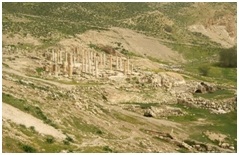
Jacob had reconciled with his uncle, Laban, who had caught up with him at Mizpah in Giliad, but he still feared his brother Esau, who had vowed to kill him for stealing his birthright. When Jacob camped at Mahanaim on his way to meet Esau, he was greeted by the angels of God who protected him. Nevertheless, a frightened Jacob made the first prayer in the Bible in which a human being asks God for personal protection.
Penuel (the face of God) was so named by Jacob after he wrestled there all night with God in the form of a man or angel (Genesis 32:24- 30). A massive Bronze and Iron Age temple recently discovered at Pella, in the northern Jordan Valley, is thought to be the best preserved temple from Old Testament times anywhere in the Holy Land.
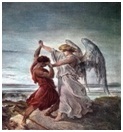
The discovery strongly indicates that Pella is the site of ancient Penuel.
After Jacob’s struggle with the angel of God, his name was changed to Isra-el (he struggles with God). He reconciled with Esau and continued with his family to Canaan to later emerge as the father of the twelve tribes of Isra-el. Esau remained in southern Jordan, where the Bible describes him as the father of the Edomites in the land of Seir (Edom), In Islamic times, Pella then known as Tabaqet Fahl, witnessed a determining battle between Muslims and Christian Romans. Pella 1.5 hour away from Amman
DID YOU KNOW?
Pella is known to have been inhabited for most of the past 6000 years, mainly due to its strategic location at the junction of north south and east-west trade routes. It was named ‘Pella’ during the Hellenistic period when the soldiers Of Alexander the Great named their settlements after their leader’s Macedonian birthplace
This is the place where Jesus taught the people about the Kingdom of God
UMM QAYS
During the time of the New Testament, northern Jordan was the region of the Roman Decapolis (meaning ‘ten cities’ in Greek). All the Decapolis cities except for one, are today located in northern Jordan or southern Syria, on the eastern side of the Jordan River Valley. This is the place where Jesus taught the people about the Kingdom of God and performed his miracles.
The old Decapolis city of Gadara (modern-day Umm Qays), with its spectacular panoramic views overlooking the Sea of Galilee, is the site of Jesus’ miracle of the Gadarene swine. It is here that he encountered a demented man who lived in the tombs near the entrance to the city; Jesus cast the bad spirits out of the man and
into a herd of pigs, which then ran down the hill into the waters of the Sea of Galilee and drowned.
A rare five-aisled basilica from the 4th century was recently discovered and excavated at Umm Qays. It has been built directly over a Roman-Byzantine tomb and has a view into the tomb from the interior of the church. It is also located alongside the old Roman city gate on the road from the Sea of Galilee. Everything about this distinctive arrangement of a church above a tomb at this particular place, strongly indicates that it was designed and built to commemorate the very spot where the Byzantine faithful believed that Jesus performed his miracle.
Umm Qays is now a spectacular destination. Ancient Graeco Roman ruins are intertwined with houses of an Ottoman village. Many of the structures of Umm Qays are built with black basalt stone, giving the city a grand and
Unique feel. The visitor standing at the junction of Syria, Israel and Jordan can enjoy a stunning view of Lake Tiberius and The Golan Heights.

AL SALT (Saltus)
One of the earliest patriarchal figures in the Bible is Job, whose book is one of the world’s great masterpieces of religious literature. The City of As Salt, north-west of Jordan’s capital, houses the tomb/shrine of Job, the wealthy, righteous man from the Land of Uz, who endured hardship with great patience and was rewarded with God’s blessing. The story of Job is regarded as one of the oldest in the Bible, and is thought to have taken place during the Patriarchal Period, in the Early and Middle Bronze Age (around 2500-1500 BC). It therefore places Jordan squarely in the genesis of human faith on earth. Salt is also the location of the tomb/shrine of the prophet Jethro, who was the father-in-law of Moses (In the Hebrew Bible Jethro was the priest of Midian and Moses' father-in-law, who sheltered Moses for 40 years after his flight
from Egypt,The father of Moses' wife Zipporah, Jethro became The grandfather of their two sons, Gershom and Eliezer). It is also the site of the tombs of Jad and Asher, who were both sons of Jacob. Salt 20 minutes (20 km) to the north west of Amman.

UMM AR-RASAS
A rectangular walled city which is mentioned on both the Old and New Testaments of the Bible, It was fortified by the Romans, and local Christians were still embellishing it with Byzantine-style mosaics well over 100 years after the start of the Muslim Umayyad rule. Most of the city now lies in ruins, but there are several buildings in its eastern part, including churches, a courtyard with a well, staircases and stone arches that have all been excavated and restored. Just outside the city walls is the recently unearthed Church of Saint Stephen with its perfectly preserved outstanding mosaic floor, the largest of its kind to be discovered in Jordan and second only to the world famous mosaic map at Madaba. The mosaic depicts the images of 27 Old and New Testament cities of the Holy Land, east and west of the River Jordan. Just two kilometers north of Umm Ar-Rasas is the highest standing ancient tower in Jordan, believed to have been used as a place of solitude by early Christian monks.
The tower is 15 meters high and has no door or inner staircase. Today it is inhabited only by flocks of birds.
HISBAN Song of Solomon 7:5, says “…your eyes are like pools In heshbon”
Ancient Hesebon was beyond the Jordan. Hesebon was taken by the Israelites on their entry to the Promised Land, and was assigned to the tribe of Reuben (Numbers 32:37); afterwards it was given to the tribe of Gad (Joshua 21:37; 1 Chronicles 6:81), The first reference in the Tanakh to Heshbon is found in the Book of Deuteronomy (2:24), where it is mentioned as the capital of Amorite king, Sihon (Sehon). It is later mentioned in Numbers 21:21-35, which tells the story of the Israelite victory over Sihon the Amorite during the time of the Exodus under Moses. In this passage, Heshbon is highlighted due to its importance as the capital of Sihon, King of the Amorites:
"For Heshbon was the city of Sihon, king of the Amorites, who had fought against the former king of Moab and had taken all his land out of his hand, as far as the Arnon." (Numbers 21:26 NASB) Similar passages appear in Deuteronomy and Joshua, with the primary emphasis being the victory of the Israelites over King Sihon at the site of Heshbon, which was his capital. These events occurred during the time of Moses, who soon after died in the region, after viewing the "promised land" from the top of Mount Nebo. Following the death of Moses, Heshbon became a town at the border between the Tribe of Reuben and the Tribe of Gad. Further biblical evidence suggests that the town later came under Moabite control, as mentioned by Isaiah and Jeremiah. Heshbon also makes it into the Canticle of Canticles, biblical love poem of Song of Solomon where, in verse 7:4, the poet likens his love's eyes to "the pools of Heshbon." which refers to the magnificent fish-pools of Hesebon. The Prophets mention it in their denunciations of Moab (Isaiah 15:4, 16:8, 9; Jeremiah 48:2, 34, 45). Hisban is approximately 30 minutes away from Amman
DID YOU KNOW?
During the 1st millennium BC, the Kings’ Highway linked the kingdoms of Edom, Moab, and Ammon. Several centuries later the Nabateans used this road as a trade route for luxury goods such as frankincense and spices coming up from the southern Arabian peninsula. When the Romans took over the area, they remodeled the road to meet Roman standards for troop transport, and renamed it the Via Nova Traiana. The highway has long been an important pilgrimage route for both Christians and Muslims alike.
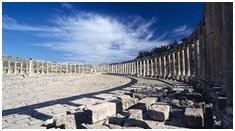
JERASH
Jerash, formerly known as Gerasa, is indisputably the most complete and best preserved Graeco-Roman city in the Middle East and is noted in the Bible as the “region of the Garasenes”(Mark 5:1; Luke 8:26). Within a large ecclesiastical complex within the city there is a fountain where Byzantine citizens once annually celebrated Jesus’ miracle of turning water into wine. Today the “Fountain Court” within Jerash is a popular destination for modern pilgrims who want to re-enact the travels and teachings of Christ in the splendid 1st century AD cities of the Decapolis.
The colonnaded streets, plazas, temples, paved pathways, theatres and fifteen Byzantine churches make
Jerash the second most important historical destination for tourists after Petra
PETRA
During the time of Jesus and the Apostles, one of the East Mediterranean’s greatest trading centers was located in the southern Jordan city of Petra, the extensive rock-cut capital of the Nabataean Kingdom. Petra flourished during Nabataean rule from the 3rd century BC to the early 2nd century AD, when it was occupied by the Roman Emperor, Trajan. Petra seems to be mentioned in the Bible’s Old Testament under several possible names, including Sela and Joktheel (2 Kings 14:7). During the Exodus, Moses and the Israelites passed through the Petra area in Edom.
Local tradition says that the spring at Wadi Musa (Valley of Moses), just outside Petra, is the place where Moses struck the rock and brought forth water (Numbers 20:10-11). The Bible says that Moses was not allowed to enter the Holy Land but could only glimpse it from Mount Nebo because he struck the rock with his rod to bring forth water, instead of speaking to it, as God had commanded (Numbers 20:12-24).
Aaron, the brother of Moses and Miriam, who was called by God to be Moses’ prophet, died in Jordan and was buried in Petra at Mount Hor, now called Jabal Harun in Arabic (Mount Aaron). A Byzantine church and later an Islamic shrine/tomb of Aaron were built on the summit of the mountain, which today attracts pilgrims from all over the world. Aaron was the first High Priest of the Bible and is remembered for the beautiful blessing that God commanded him to give people:
“The Lord bless you and keep you; the Lord make his face shine upon you, and be gracious to you; the Lord lift up his countenance upon you and give you peace” (Numbers 6:24-26).
Petra was almost certainly the last staging post of the three kings, who took frankincense, gold and myrrh to honour the baby Jesus in Bethlehem (Matthew 2:1-12). The King Aretas, mentioned in Corinthians 11:32, was a Nabataean king who ruled Petra. Petra is about 3 hours from Amman.
THE DEAD SEA & LOT’S CAVE
Sodom and Gomorrah
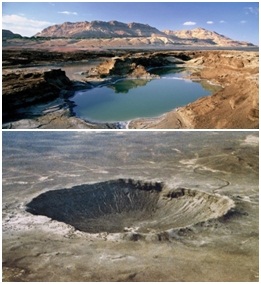
The Dead Sea is one of the most dramatic places on earth, with its stunning natural environment equally matched by its powerful spiritual symbolism. The Bible variously calls it the “Sea of Arabah”, the “Salt Sea”, or the “Eastern Sea”. Mediaeval texts refer to it as “the Devil’s Sea”, but the Arab people have always known it as Bahr Lut (Lot’s Sea).
The infamous Sodom and Gomorrah and other cities of the Dead Sea plane were the subjects of some of the most dramatic and enduring Old Testament stories. Soon after Abraham and his nephew, Lot, arrived in the Dead Sea Plain, they separated their herds and people and went their own ways (Genesis 13:1-13). God said he would destroy the cities of Sodom and Gomorrah because of the inhabitant’s wicked and arrogant ways but Abraham successfully argued with God that Lot and any other righteous people should be spared. As they were leaving the burning city of Sodom, Lot’s wife disobeyed God’s order not to look back and was turned into a pillar of salt. (Genesis 19:26). Lot and his two daughters survived and fled to a cave near the small town of Zoar (modern-day Safi). The Bible says Lot’s daughters gave birth to sons whose descendents would
become the Ammonite and Moabite people, whose kingdoms were in what is now central Jordan.
The New Testament describes the destruction of Sodom and Gomorrah as an example in undergoing the punishment of eternal fire (Jude 1:7). When speaking about human behaviour, Jesus himself recalled the destruction of Sodom and Gomorrah and specifically warned “Remember Lot’s wife” and said that “it would be the same on the day the Son of Man is revealed”, meaning every person’s fate would depend on whether he or she chose material possessions or God’s Kingdom (Luke 17:28-32).
Although not confirmed, the sites of the cities of Sodom and Gomorrah are believed to be the remains of the ancient walled towns of Bab ed-Dhra’ and Numeira, in the southeastern Dead Sea central plain. They both still show evidence of destruction by fire, which took place in the Early Bronze Age, after which they were never reinhabited. The three other Cities of the Plain were “Admah, Zeboiim and Bela, that is Zoah” (Genesis 14:2). The remains of these places are still buried somewhere around the Dead Sea. Remains of other Early Bronze Age towns, including massive burial sites with thousands of graves, have been identified along the haunting Dead Sea plain, at places such as Feifeh, Safi, Khneizirah, and others. The events in the lives of Abraham and Lot probably took place during the Early or Middle Bronze Age (around 2500- 1500 BC). By the 6th century AD in the early Christian era more than 2000 years after the Genesis events relating to Sodom and Gomorrah, Lot and his daughters, the land of Jordan was dotted with Christian monasteries and churches.

On a hillside above the town of Zoar (modern-day Safi), Byzantine Christians built a church and monastery dedicated to Saint Lot. The complex was built around the cave where Lot and his daughters found refuge. The monastery complex has been excavated and can easily be visited today. Somewhere along the Dead Sea’s coastal plain is the Valley of Salt, where King David “slew 18 000 Edomites” (Samuel 8:13). The Araba desert, referred to as a “wilderness” in the Bible (Deuteronomy 1:1), is the semi-arid region in southern Jordan between the Dead Sea and the Gulf of Aqaba, known today as Wadi Araba. The entire length of the Dead Sea’s eastern shore, from the River Jordan in the north, past the outstanding new hotels, resorts, spas, and amazing thermal springs, to the broad plain at the southern end with its natural salt
formations, is easily accessible on fine roads from central and southern Jordan. Lot’s Cave is around 1.5 hour away from the Dead Sea.
DID YOU KNOW?
As they were leaving the burning city of Sodom, Lot’s wife disobeyed God’s order not to look back and was turned into a pillar of salt. (Genesis 19:26). Lot and his two daughters survived and fled to a cave near the small Town of Zoar (modern-day Safi). In the Book of Genesis, God refers to the Jordan River Valley around the Dead Sea, as the “Garden of the Lord”, and it is believed to be the location of the Garden of Eden.
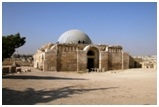
AMMAN
The Jordanian capital is mentioned in the Bible by the name of Rabath Ammon, in the story of King Og, an Ammonite King who was famed for being a giant of a man and for his huge bed which was preserved in Rabath Ammon. Deuteronomy (3:11).The city was also known as Philadelphia, named so in the 3rd century BC after the Ptolemic ruler Philadelphus. Amman today boasts a number of important ruins, including the Roman Theatre, a Roman temple and several Byzantine churches.
The archeological museum situated in the Citadel owns one of the finest collections of ancient artifacts in the Middle East including some of the Copper Dead Sea scrolls. The modern capital is well known for its excellent infrastructure, museums fascinating shops, gourmet restaurants, luxurious hotels and recreational facilities.
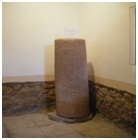
AQABA
The first site in southern Jordan mentioned in the Exodus is Eziongeber (Number 33-35). Ezion-geber and Elath (or Eloth) were port towns-located at or near the Red Sea port/resort of Aqaba. They are best known for their roles during the Iron Age, a few hundred years after the time of the Exodus. They are associated with King Solomon and the Queen of Sheba, and The Chronic Wars between the kings of Judah and Edom (Deuteronomy 2:8, 1 Kings 9:26 2 Kings 14:22). In recent years what is believed to be the oldest purpose-built church in the world has been discovered in Aqaba. the Red Sea city and Jordan’s only port is a very well known tourist attraction, famous for its relaxing beaches, unique diving
locations, adventure sports facilities, antique shops and numerous hotels and shopping malls. Aqaba is 325 KM. / 4 hours drive south of Amman.
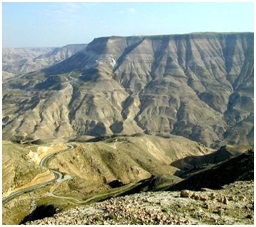
THE KINGS’ HIGHWAY
The Kings’ Highway is the world’s oldest continuously used communication route. It used to link ancient Bashan, Giliad, and Ammon in the north with Moab, Edom, Paran, and Midian in the south. Abraham, a common patriarch of Jews, Christians, and Muslims, who passed through northern, central, and southern Jordan, would certainly have used this route on his journey from Mesopotamia to Canaan.
In the Bible, The Kings’ Highway is first mentioned by name in Genesis 20:17, when Moses led the Exodus through southern Jordan. Moses asked the King of Edom if he and his people could “go along the Kings’ Highway” during their journey to Canaan, but his request was denied, The Kings’ Highway is also mentioned in an earlier story in Genesis 14:5-8, in relation to the four Kings from the north, who attacked Soddom and Gomorrah and the three other Cities of the Plain; heshbon (Hisban), Medaba (Madaba) and Kir Moab (Karak).
They took Abraham’s nephew Lot, hostage, only to be chased and beaten by Abraham.
Today this scenic route is a fine paved road that winds, dips, twists, and rambles through the heart of the Jordanian highlands, passing through the country’s most stunning landscapes and some of its most important ancient sites.
The Kings' Highway is the world's oldest continuously used communication route.